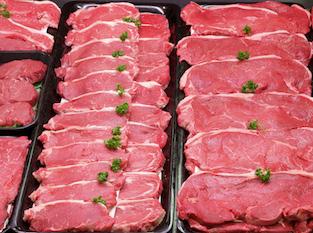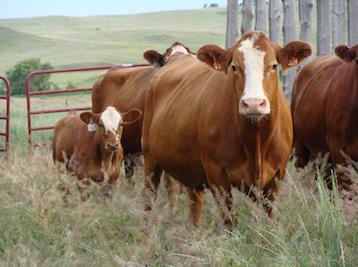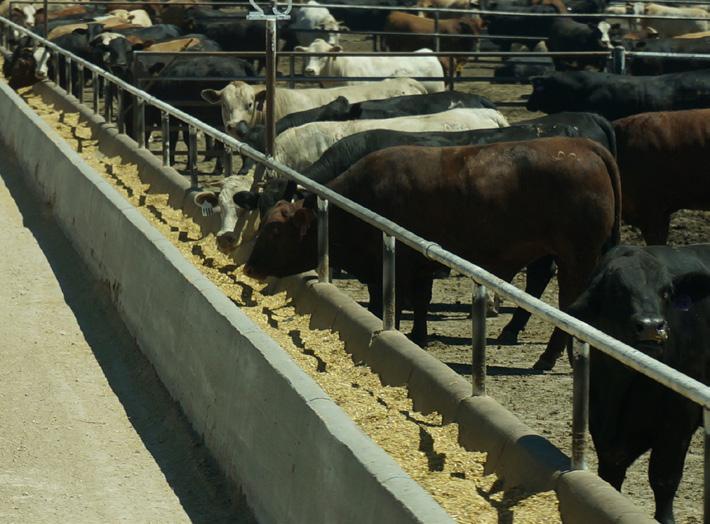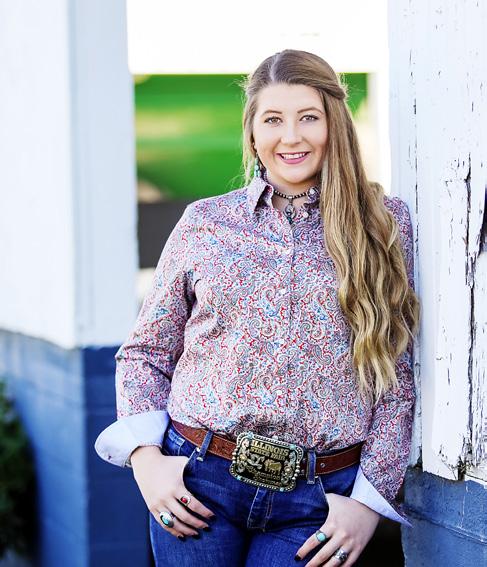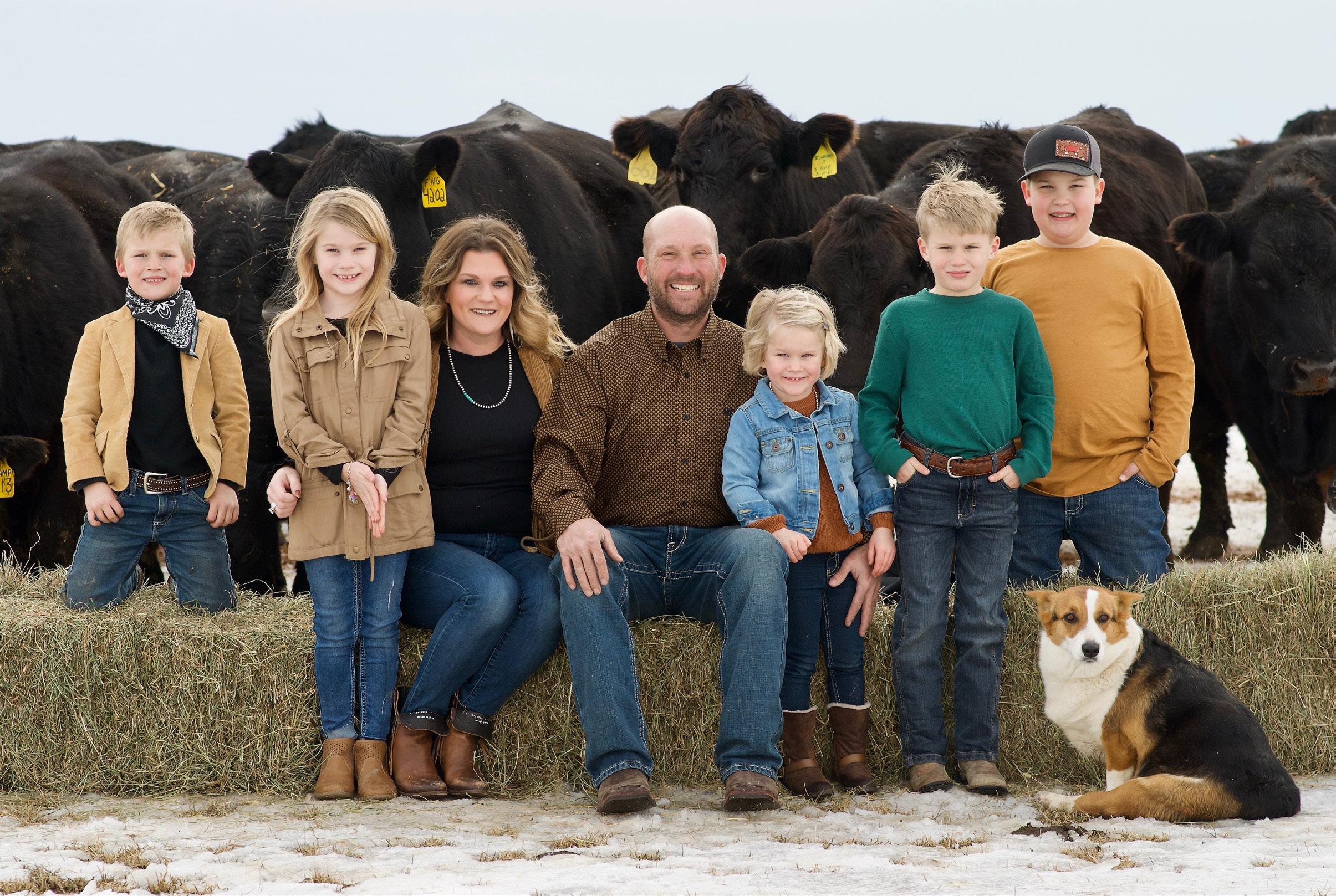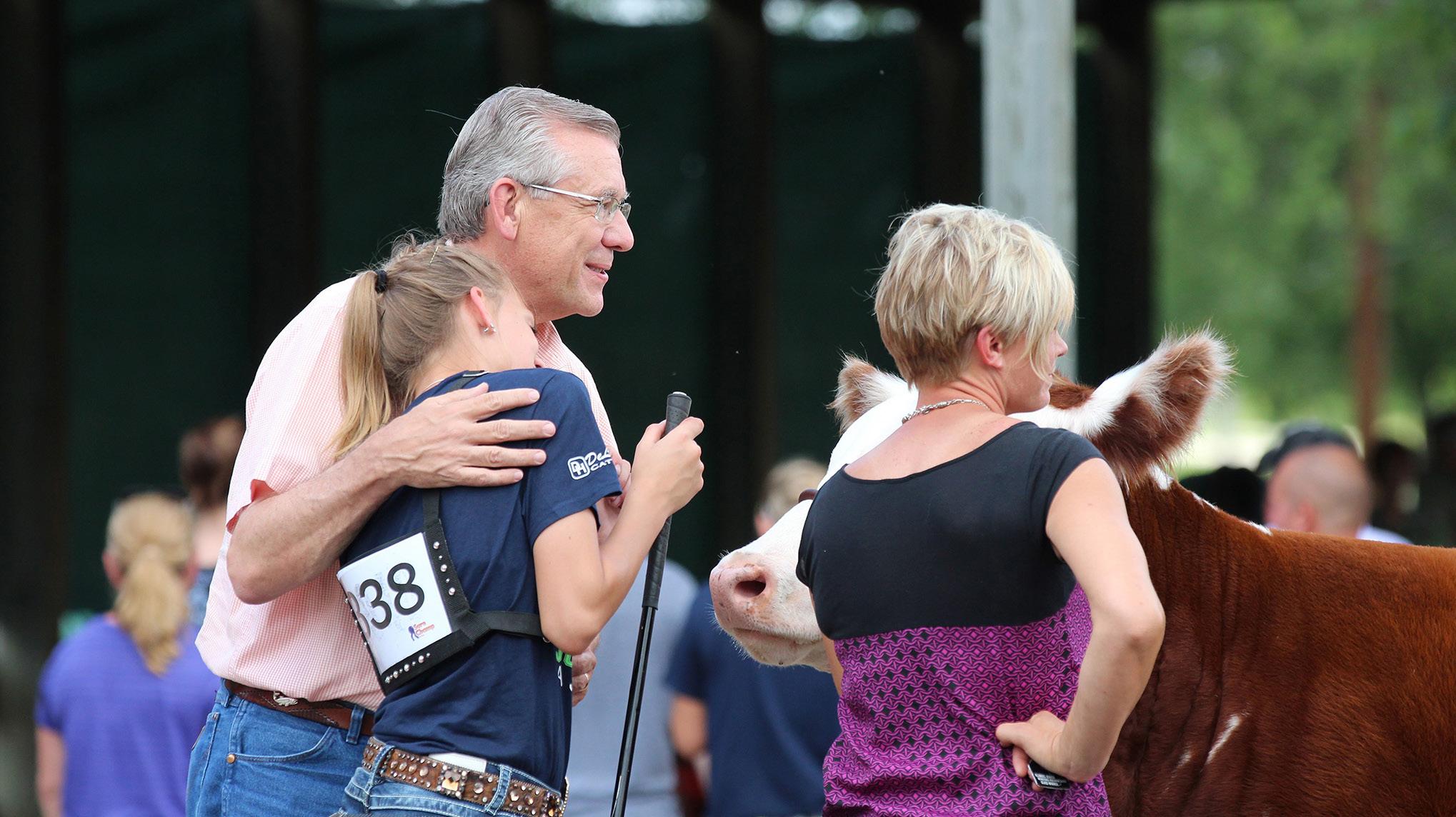
9 minute read
Are You Foreign Animal Disease Outbreak Ready?
Are You Foreign Animal Are You Foreign Animal Disease Outbreak Ready? Disease Outbreak Ready?
Animal health experts say it is not a matter of if, but when a foreign animal disease will impact the United States beef industry.
Advertisement
by Barb Baylor Anderson
Foreign animal diseases (FADs) – including foot-andmouth disease (FMD), the most likely to impact beef producers – is expected to enter the United States at some point. The beef industry needs to be prepared.
“FMD is the most contagious disease in ruminant animals and could be a bigger disaster than COVID-19 with humans,” says Danelle Bickett-Weddle, lead public health veterinarian for the Center for Food Security/Public Health at Iowa State University. She notes that two-thirds of countries worldwide have identified FMD within their borders. “Immediate cattle movement restrictions would affect food availability, animal welfare and producer economic viability.”
USDA defines a FAD as “an important, transmissible livestock or poultry disease believed to be absent from the United States and its territories that has a potential significant health or economic impact.” For example, the 2014–15 highly pathogenic avian influenza FAD outbreak in the United States cost $850 million in indemnity payments and response activities.
The Foreign Animal Disease Preparedness and Response Plan (FADPReP)/ National Animal Health Emergency Management System (NAHEMS) Guidelines say the economic impact of a FAD outbreak would be felt through lost international trade and disruptions in domestic trade, as well as from eradication costs that would include depopulation, indemnity, disposal and virus elimination. Additional direct and indirect costs would stem from lost production and related business and unemployment, not to mention the social and psychological toll on beef producers.
Elliott Dennis, University of Nebraska Extension livestock marketing specialist, explains than an FMD outbreak in the U.S. would classify the country as “FMD-endemic.” That means U.S. beef exports could only be sent into other “FMD-endemic” countries. As it stands right now, many of the major U.S. beef export markets would be closed off since they are not FMD-endemic.
“In other words, producers would lose more since FMDendemic countries would not be willing to pay premiums for


U.S. grain-finished products, further suppressing price,” says Dennis. He cites a research study that estimates under a “best case” scenario, where cattle are vaccinated to live, 50 herds are vaccinated after 22 days and 10 herds are infected before vaccination occurs, all within a 25-mile vaccination radius, it would cost beef producers $33 billion dollars.
“We have been fortunate so far in dodging huge economic impacts. But pathogens are out there looking for a lapse in biosecurity. It is better to be prepared than to be afraid. You need to know how to respond to be resilient, stay in business and protect the industry,” says Yvette J. JohnsonWalker, epidemiologist with the University of Illinois College of Veterinary Medicine and affiliate faculty member at the University of Illinois Chicago School of Public Health. “It is not if, but when, given the mobility of people and livestock. An outbreak of FMD will happen.”
Many Elements to Industry Response
Generally speaking, the beef industry must prepare for a complex balance of detect, control and contain tactics to maintain industry viability. Bickett-Weddle says that would mean having plans in place for stopping cattle movement, stamping out infected animals to get ahead of the disease and having biosecurity measures in place.
“If FMD is diagnosed in the U.S., there would need to be a standstill in movement for 72 hours,” she says. “We would need to set up control areas around infected farms, prevent further exposure and secure a feed supply in the control area for animals that are not infected.”
Much like the airplanes grounded after 9-11, BickettWeddle says packer, processor and auction sales activity would come to an immediate halt. Any cattle movement would be by permit only, depending on risk. Trade partners would be informed of the disease and the U.S. would have to quickly demonstrate outbreak control for the public. Producers might require an operational permit for feed and a continuity of business permit to move cattle into the supply chain.
“Trace back and trace forward with two incubations, 14 days each, and prior to an outbreak, would be needed,” she says. “As with COVID-19, there will be some asymptomatic animals.”
Johnson-Walker says other challenges would present during an outbreak. For example, the U.S. has seen what an unanticipated shortage of testing swabs meant to COVID-19 response.
“While it is easier to restrict livestock than people, COVID-19 has shown us that bottlenecks can occur. No matter how prepared you are, supply chain problems or a shortage of experts to help depopulate or vaccinate can happen,” she says. “USDA is prepared to trace animal movements, but cattle are transported across state lines and every state has its own set of restrictions.”
Johnson-Walker adds that since FMD is easily transmissible to pigs, sheep and goats, an outbreak could become even larger. “Our approach has to be for all livestock while we also monitor African swine fever, a new bird flu and the next new thing we don’t know about yet.”



(217) 824-2815
stephenstrailers@yahoo.com www.stephenstrailers.com
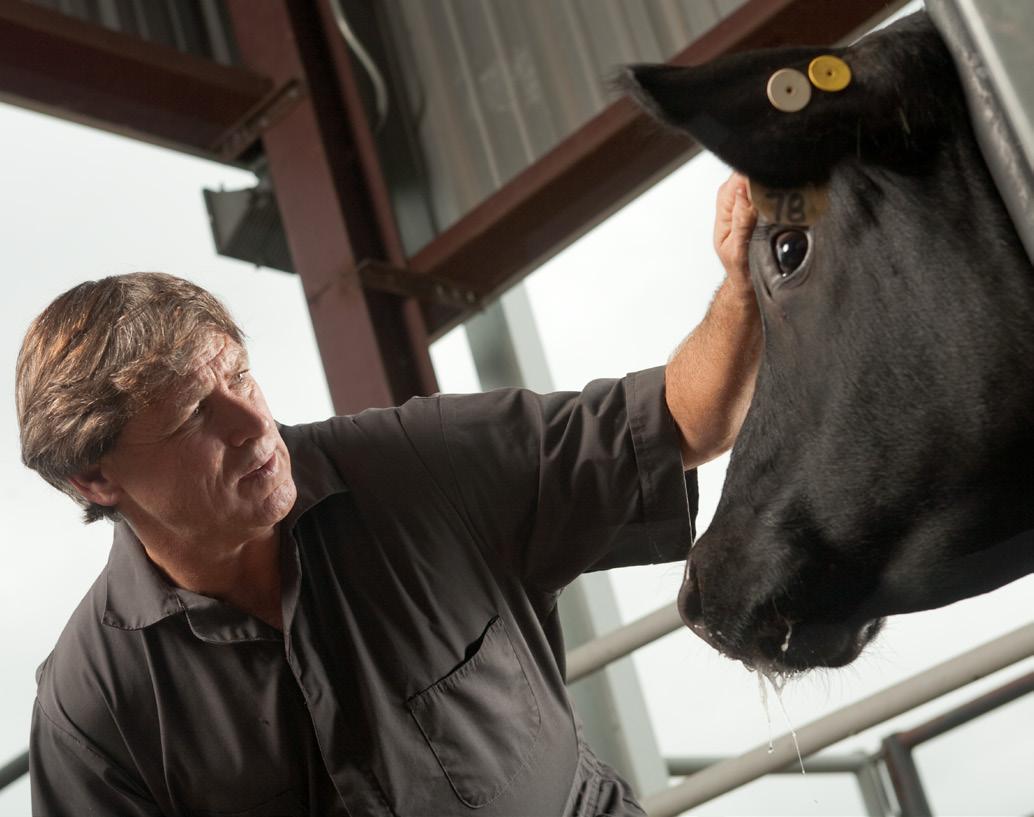
Individual Farm Action a Necessity
Johnson-Walker says individual farm disaster planning is just the same for a FAD as it is for a power outage, flood or other climate change-driven weather disaster. The same skill set is used to determine what resources are needed and to plan for things to go wrong.
Several layers of preparedness are paramount, and Johnson-Walker suggests starting with a review of available resources. An online Federal Emergency Management Association (FEMA) course provides an overview of how to handle animals during disasters.
Another resource recommended by Bickett-Weddle is securebeef.org. The website provides a continuity of business plan and several related tools for producers and others in the industry.
“Make contingency plans now for movement restrictions,” she says. “Increase your awareness of FMD and educate your employees about disease symptoms. The same is true of biosecurity practices. Make sure employees understand why they’re important, not just that they have to follow them. COVID-19 is a practice run. Take a page from the book and apply it.”
Bickett-Weddle adds that producers should get a premises ID from their state. If one is already in place, make sure it matches where animals actually reside. She also advises setting up a line of separation – a boundary to protect the animals from exposure.
“Just like a moat around a castle protects the castle and a drawbridge controls what comes in and out, producers should have a line of separation and be prepared to clean and disinfect anything that comes across it in an outbreak,” she says. “It can be 2-4 days before you see any clinical signs of disease with FMD, so routine biosecurity is not enough. The self-assessment biosecurity checklist for feedlots and pasture can help find gaps and strengths.”
Both experts say producers should be prepared during an outbreak to have veterinarians or regulatory officials on their farms for inspection and disease monitoring. Animals may be tested via oral swabs, with specimens sent to labs for disease confirmation. Vaccines also are likely.
“The FMD vaccine is a cold sensitive, killed vaccine,” says Bickett-Weddle. “With 23 strains of FMD worldwide, vaccine banks are in place for strategic use overseen by various officials. The vaccine does require a booster every six months in cattle and animals are traced until death.”
Last July, USDA’s Animal and Plant Health Inspection Service (APHIS) purchased FMD vaccine for the National Animal Vaccine and Veterinary Countermeasures Bank (NAVVCB), investing $27.1 million which will be used in the event of an outbreak. The new U.S.-only vaccine bank makes a much larger number of vaccine doses available, in addition to those in the North American FMD Vaccine Bank. Vaccination would allow animals to move domestically.
“We are working with the Illinois Department of Agriculture, industry, regulatory agencies and university officials to identify ways to meet our common goals for success and resiliency,” says Johnson-Walker. “We have done a virtual tabletop exercise with a cross-section of these people to talk about preparedness and we are training veterinary students to assist. Next. we will take a think-tank approach to dive into specific issues and outline solutions, so we are all ready.”
FAD/FMD Checklist for Beef Producers
Animal health experts say the actions below can help producers prepare for an outbreak: • Have relationships with likely responders to disease – your local vet, the state vet and the county emergency manager and any others. • Know what supplies and equipment you would need in a disaster. Have an alternate source for obtaining them and see if you can lock in prices before disaster strikes. • Work with a vet on biosecurity improvements you can make to prevent disease. • Prepare a cattle inventory and record where they are and where they are headed. Identify your movements and husbandry practices to know where the holes are. • Make a biocontainment plan to follow if you get disease so it does not spread. Know the commodities, people, manure and carcasses moving in and out to minimize losses. • Be sure you have an updated premises ID. Apply for one for free at: https://www2.illinois.gov/sites/agr/ Animals/AnimalHealth/Pages/Premises-Registration.aspx. • Know what diseases are circulating and how to prevent them or identify them. • Remember, you know your cattle better than anyone so work to prevent disease exposure before an outbreak.
In the Event of a Foot and Mouth Disease Outbreak

What is the Secure Beef Supply Plan?
• Provides a workable business continuity plan for operations that are under movement restrictions but not infected with foot and mouth disease (FMD) • Offers movement guidance for producers, haulers, packing/processing plants, and officials managing the outbreak • Provides biosecurity and surveillance tools for producers
How will the U.S. respond to a Foot and Mouth Disease (FMD) outbreak?
• Response will focus on stopping the spread of this animal disease • Control Areas will be set up around FMD infected and surrounding operations • Movement restrictions will be put in place for animals and animal products in
Control Areas
Business Continuity Movement Guidance
Biosecurity Surveillance
Why is the Secure Beef Supply Plan needed?
• Help operations in Control Areas whose cattle have no signs of FMD continue to move cattle • Limit lost income for operations, haulers, packers/processors, and grocers • Maintain the supply of beef products to consumers because FMD is not a public health or food safety concern
How can you voluntarily participate in the Secure Beef Supply Plan?
• Contact your State Animal Health Official to request a Premises Identification Number (PIN) • Visit the Secure Beef Supply website securebeef.org • Develop your operation’s SBS Plan using the materials available in English and Spanish
The Secure Beef Supply Plan is funded by USDA.
